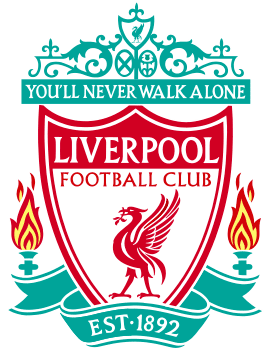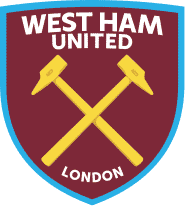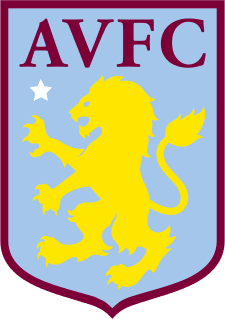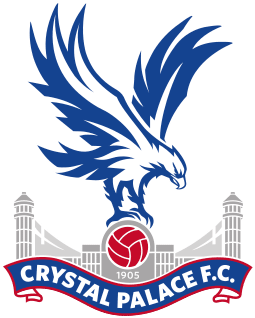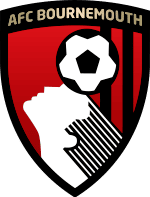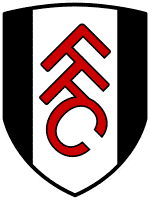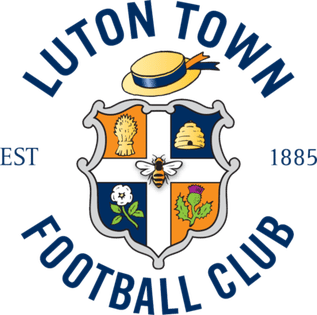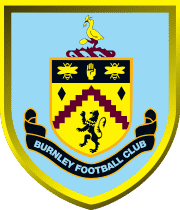Brighton & Hove Albion FC Tryouts & Club Guide: History, Stadium, Players, and More!

Welcome!
Discover the world of soccer with fcscout.com, your go-to scout for club tryout information, club guides, player profiles, in-depth product reviews, and more. We’re dedicated to exploring and revealing the best in each domain, empowering you with knowledge to make informed choices.
Thank you for being here!
Hi, I’m Carlos! A coach, sports enthusiast, and the founder of FCScout.com.
I fell in love with the game at a very young age like many of you. I’ve been following and playing soccer for many years.
Throughout my career, I always enjoyed helping soccer players chase their dreams, which is why I started this website. I wanted to reach a larger audience outside of my local area and fcscout.com was born.
This website is a platform I will be using to update club pages on any tryouts, stadiums, players, tech, and more from clubs around the world. I also create free recruitment profiles for players looking to have that extra competitive edge when reaching out to clubs.
That’s it. That’s my pitch for you to stick around (or browse the site as you please).
This is already too much text for a “see more” drop-down button thing. If you want to reach out to me, head on over to my contact page 🙂

Brighton & Hove Albion Football Club, commonly referred to simply as Brighton, is an English professional football club based in the city of Brighton and Hove. They compete in the Premier League, the top tier of the English football league system.
Brighton & Hove Albion FC Youth Development System
American Express Elite Football Performance Centre
Three years after the Amex Stadium staged its first football match in 2011, Albion opened a state-of-the-art training and teaching facility in Lancing, named the American Express Elite Football Performance Centre.
Albion were awarded Category One status in July 2014, under the Premier League’s Elite Player Performance Plan, which highlighted the club as one of the best in the country in terms of facilities, staff and opportunities for young players.

Costing in the region of £20m to build, the American Express Elite Football Performance Centre includes a distinctive Y-shaped building, accommodating the club’s professional and academy teams on separate wings.
There are 11 full- and half-size natural grass and artificial pitches, plus a half-size covered indoor pitch, which ensures the playing facilities are accessible for the club’s players and staff during a range of weather conditions.

Off the field, there are medical treatment rooms, a gymnasium, a swimming pool, numerous changing rooms, and a shared canteen for both players and staff.
Albion’s youth sides, including the under-18s and under-23s, who compete in the Premier League South and Premier League 2 respectively, play their matches at the American Express Elite Football Performance Centre throughout the season.
Albion in the Community
Albion in the Community (AITC) is the official charity of Brighton & Hove Albion Football Club.
Through the power of football and the brand of Brighton & Hove Albion Football Club, we are committed to delivering high-quality, accessible opportunities that improve the health and wellbeing, education and aspirations of our community. To learn more, please click here.
Brighton & Hove Albion FC Developing Talent
Regular football development sessions run by our qualified coaches are helping local young footballers develop their skills by providing them with access to expert coaching.

Weekly virtual football sessions
To book or learn more about football sessions, please click here.
Brighton & Hove Albion FC Boys’ Player Pathway
Here at Albion in the Community (AITC) we have a number of regular football sessions aimed at young footballers which make up our Boys’ Player Pathway.
The first level of the pathway is our holiday soccer schools, after school clubs and weekly soccer schools, where the emphasis is on boys of all abilities aged five to 13 taking part in fun sessions, providing an excellent introduction to football and a brilliant setting in which to develop new skills and make new friends.

Any boys who show particular promise can then be invited to an AITC invitation centre. Again, aimed at boys aged five to 13, these take place at venues across Sussex. Players attending invitation centre sessions will receive advanced training aimed at further developing their skills.
The next level on the Boys’ Player Pathway is the advanced training centres. These are aimed at players in the under-five to under-13 age groups and sessions take place at venues in Brighton, Eastbourne and Worthing. AITC’s advanced training centres aim to bring together the best regional players into an environment that challenges the individual and helps further develop their skills. With a smaller player to coach ratio, and using the Brighton & Hove Albion FC academy philosophy, our advanced training centres create a high-performance environment.
The fourth and final tier of the AITC pathway is the charity’s talent ID centres, which sits directly below Brighton & Hove Albion’s own academy structure. Places are only available to boys who have been formerly invited through the Brighton & Hove Albion scouting network. Sessions take place in Brighton, Crawley, Chichester, Eastbourne and Kent for players in the under-five to under-nine age groups and at the American Express Elite Football Performance Centre in Lancing for those in the under-10 to under-13 age group.
Players at talent ID centres receive a personalised training programme and each player’s development is constantly assessed, with coaches looking to identify players who may be suitable for a trial with the Brighton & Hove Albion academy.
For more information on our Boys’ Player Pathway call 01273 878277 or email: talent.id@albioninthecommunity.org.uk.
Brighton & Hove Albion FC Girls’ Player Pathway
We also have a number of regular football sessions aimed at young female players which make up our Girls’ Player Pathway.
The first level of the pathway is the holiday soccer schools, after school clubs and weekly soccer schools, where the emphasis is on girls of all abilities aged five to 13 taking part in fun sessions, providing an excellent introduction to football and a brilliant setting in which to develop new skills and make new friends.
Any girls who show particular promise can then be invited to an AITC invitation centre. Again, aimed at girls aged five to 13, these take place at venues across Sussex. Players attending invitation centre sessions will receive advanced training aimed at further developing their skills.

The next level on our Girls’ Player Pathway is the advanced training centre. This is aimed at players in the under-10 to under-16 age groups and sessions take place at Brighton & Hove Albion’s American Express Elite Football Performance Centre in Lancing. The advanced training centre aims to bring together the best regional players into an environment that challenges the individual and helps further develop their skills. With a smaller player to coach ratio and using the Brighton & Hove Albion FC academy philosophy, our advanced training centre creates a high-performance environment.
The fourth and final tier of the AITC pathway sits directly below Brighton & Hove Albion’s own academy structure and is our regional talent centre. Places are only available to girls who have been formerly invited through the Brighton & Hove Albion scouting network. The regional talent centre is located at the American Express Elite Football Performance Centre for players in the under-10 to under-16 age groups.
For more information on the AITC Girls’ Player Pathway call 01273 878277 or email: talent.id@albioninthecommunity.org.uk.
Brighton & Hove Albion FC Soccer schools
Our hugely popular soccer schools have been running since 1990 and take place in venues across Sussex.
Aimed at girls, boys and anyone aged between five and 12-years-old, our Brighton & Hove Albion Soccer Schools are a great place for young people to learn new skills and make new friends in a safe, fun and structured environment.
We currently have soccer schools taking place in Brighton and Hove, Worthing, Horsham, and Eastbourne.
For additional information on soccer schools, please click here.
Brighton & Hove Albion Recruitment Trials
At the time of this writing, there is no official publishing’s on Brighton & Hove Albion trials. Please come back at a later date while we monitor this club or click here to visit their official news section.
EXPLORE MORE CLUBS!
Explore more professional clubs by continent.
Brighton & Hove Albion FC History
After being established in 1901 and given the nicknames “Seagulls” and “Albion,” Brighton competed in the Southern League during their early years as a professional football team. In 1920, the club was accepted into the Football League. The most successful period for the club was from 1979 to 1983, when they competed in the First Division and advanced all the way to the FA Cup Final, when they were ultimately defeated by Manchester United following a replay. They played in the First Division previously, but were demoted the following year.

By the late 1990s, Brighton Football Club had fallen all the way down to the fourth tier of English football and was experiencing severe financial troubles. In 1997, the club came perilously close to being demoted from the Football League to the Conference. However, a corporate takeover prevented the club from going out of business. Following back-to-back promotions in 2001 and 2002, Brighton found themselves back in the second division of English soccer competition.
Fourteen years after going without a permanent home ground, the team moved into the Falmer Stadium in 2011. After a gap of 34 years, Brighton returned to the Premier League after finishing in second place in the EFL Championship in the 2016–17 season. This marked the end of the club’s long exile from the top division.
Stadium
Goldstone Ground
The Brighton and Hove Albion football club called the Goldstone Ground in Hove their home for the previous 95 years before the club’s board of directors made the decision to sell the stadium. The transaction, which was carried out by majority shareholder Bill Archer and his chief executive David Bellotti, proved to be contentious, and the move prompted numerous demonstrations against the board of directors. The sale resulted in the club receiving very little, if any, money.

The Seagulls faced the possibility of being demoted from the Football League during their final season at the Goldstone, which took place in 1996–1997. They defeated Doncaster Rovers in their last game at the Goldstone, which set up a winner-take-all relegation match at Hereford United, who were tied with the Seagulls in points. The result of that match would determine whether or not the Seagulls would be relegated. There was a draw between Brighton and Hereford, which resulted in Hereford being relegated to the Football Conference based on goals scored.
Falmer Stadium
Village Way, Brighton BN1 9BL is the address of Falmer Stadium, which is currently known for sponsorship purposes as American Express Community Stadium, Amex Stadium.

To everyone’s delight and pleasure, on October 28, 2005, the Office of the Deputy Prime Minister made the happy announcement that the application for Falmer had been approved. This news came as a huge source of happiness. A judicial review was necessitated as a result of the opposition raised by Lewes District Council to John Prescott’s decision to grant planning clearance for Falmer. This was due to a slight error in Prescott’s first authorisation, which omitted to indicate that some car parking for the stadium is located in the Lewes district as opposed to the Brighton & Hove unitary authority. The error was predicated on the fact that the stadium is located in Lewes. This resulted in even more waiting time. As soon as the court decided in favor of the stadium during the judicial review, the Lewes District Council announced that it will not file any other appeals.
The construction of Falmer Stadium got underway in December of 2008. On the 31st of May, 2011, the club officially finished the handover and was given the keys to the stadium. The stadium had an original capacity of 22,374 seats, and it marked the end of 12 years during which the club did not have a home. In January of 2012, the club made an application to the Brighton and Hove City council requesting permission to expand the capacity of the stadium by an extra 8,000 seats.
The application also requested permission to construct additional corporate boxes, new television facilities, and a luxury suite. On April 25, 2012, this application was approved without discussion by the planning committee of the Brighton and Hove City Council. The capacity of the stadium was increased to 27,250 for the beginning of the 2012–13 season, and then it was increased even further to 27,750 in December 2012, and then it was increased to 30,750 in May 2013.
Crest
The majority of Brighton’s history has been spent playing in blue and white shirts, typically striped, with various combinations of white and blue shorts and socks. However, for a short period of time in the 1970s, they played in all white shirts, and during the club’s most successful period in the 1980s, they played in plain blue shirts.

Since 2014 the club’s kit has been manufactured by Nike. Previous manufacturers include Bukta (1971–74. 1975–80), Admiral (1974–75, 1994–97), Umbro (1975–77), Adidas (1980–87), Spall (1987–89), Sports Express (1989–91), Ribero (1991–94), Superleague (1997–99), and Erreà (1999–2014). Their current shirt sponsors are American Express. Previous sponsors have included British Caledonian Airways (1980–83), Phoenix Brewery (1983–86), NOBO (1986–91), TSB Bank (1991–93), Sandtex (1993–98), Donatello (1998–99), Skint Records (1999–2008), IT First (2008–11), and BrightonandHoveJobs.com (2011–13).
Ownership
In May 2009, Tony Bloom succeeded Dick Knight as the chairman of Brighton & Hove Albion. Knight moved into the role of president of the club after his tenure as chairman. Tony, who attended the University of Manchester and earned a degree in mathematics there, joined the club as a key investor and stakeholder for the very first time in the year 2000.
Since that time, he has served as the club’s benefactor by providing his own personal funding for the development of the American Express Community Stadium, which was inaugurated in 2011, and the American Express Elite Football Performance Centre, which was inaugurated in 2014, respectively.









